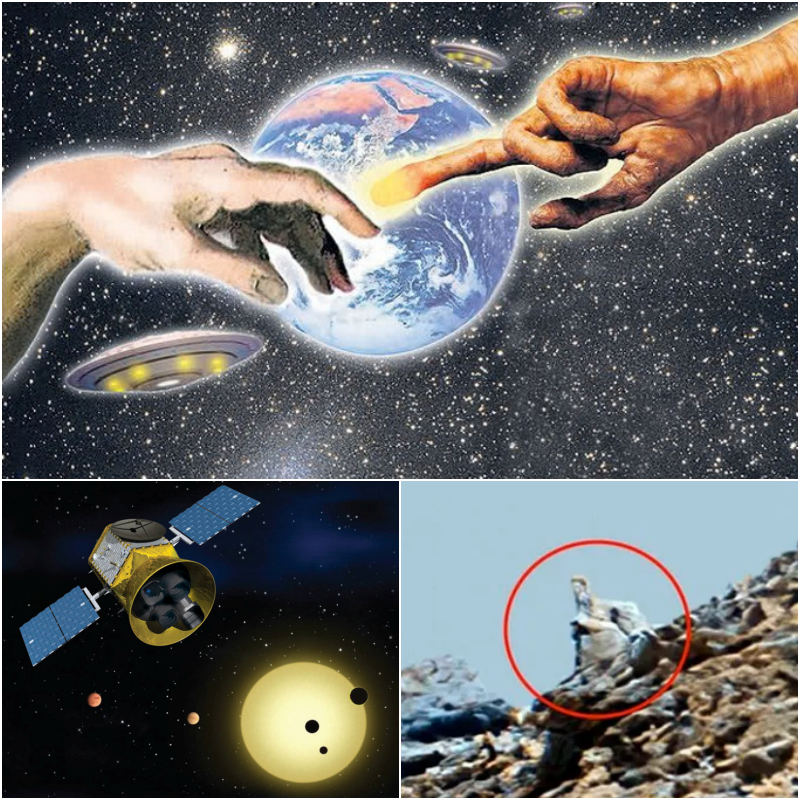Since humanity first gazed up at the stars, the possibility of extraterrestrial life has been a subject of fascination and speculation. Over the years, scientific advancements have allowed us to probe deeper into the mysteries of the universe, leading to significant progress in our understanding of the cosmos. In recent years, NASA has played a pivotal role in this endeavor, with the space agency openly acknowledging the potential existence of extraterrestrial life. In this article, we delve into NASA’s stance on this intriguing topic, exploring the scientific evidence, technological advancements, and ongoing missions that contribute to our quest to uncover the truth about life beyond Earth.

The search for extraterrestrial life is one of the most compelling quests in modern science. From the discovery of exoplanets orbiting distant stars to the exploration of icy moons in our own solar system, scientists are actively seeking signs of life beyond Earth. NASA, with its extensive resources and expertise in space exploration, is at the forefront of this quest, employing a range of tools and techniques to search for extraterrestrial life.
In recent years, NASA has publicly acknowledged the plausibility of extraterrestrial life, marking a significant shift in scientific perspective. While concrete evidence of alien life remains elusive, NASA scientists point to the vastness of the universe and the abundance of planetary systems as compelling indicators of the potential for life elsewhere. The discovery of exoplanets in the habitable zone of their parent stars, where conditions may be conducive to life as we know it, further strengthens this hypothesis.

Moreover, NASA’s ongoing exploration of our own solar system has revealed environments that could potentially harbor life. From the subsurface oceans of icy moons like Europa and Enceladus to the methane lakes of Saturn’s moon Titan, these extraterrestrial environments offer tantalizing opportunities for discovering microbial life or evidence of past life.
One of NASA’s primary objectives is to identify habitable environments within our own solar system and beyond. Mars, with its ancient riverbeds and subsurface water ice, has long been a focal point of astrobiological research. Recent discoveries of potential biosignatures on the Red Planet, such as methane and organic molecules, have heightened excitement about the possibility of past or present microbial life.
Beyond Mars, icy moons like Europa and Enceladus have captured the attention of scientists due to their subsurface oceans, which may harbor the ingredients necessary for life. NASA’s upcoming missions, including the Europa Clipper and Dragonfly, aim to explore these intriguing worlds in greater detail, searching for signs of habitability and potential extraterrestrial life.

Advancements in technology have revolutionized our ability to search for extraterrestrial life. Powerful telescopes, such as the Hubble Space Telescope and the upcoming James Webb Space Telescope, enable astronomers to study distant exoplanets and analyze their atmospheres for potential biosignatures. Robotic missions, like the Mars rovers and the upcoming Perseverance rover, allow us to explore the surface of other planets and moons in unprecedented detail.
Moreover, the development of new techniques and instruments, such as spectroscopy and mass spectrometry, enhances our ability to detect organic molecules and other indicators of life. These technological advancements are crucial in our quest to unravel the mysteries of the cosmos and answer the age-old question: are we alone in the universe?

NASA’s acknowledgment of the possibility of extraterrestrial life represents a significant milestone in humanity’s quest to understand our place in the cosmos. While concrete evidence of alien life remains elusive, the vastness of the universe and the abundance of planetary systems make the existence of extraterrestrial life undeniably plausible. Through ongoing missions, advanced technology, and scientific inquiry, we continue to explore distant worlds in search of answers to one of the most profound questions of existence. As we peer deeper into the cosmos, we remain hopeful that one day, we will uncover the truth about life beyond Earth.




